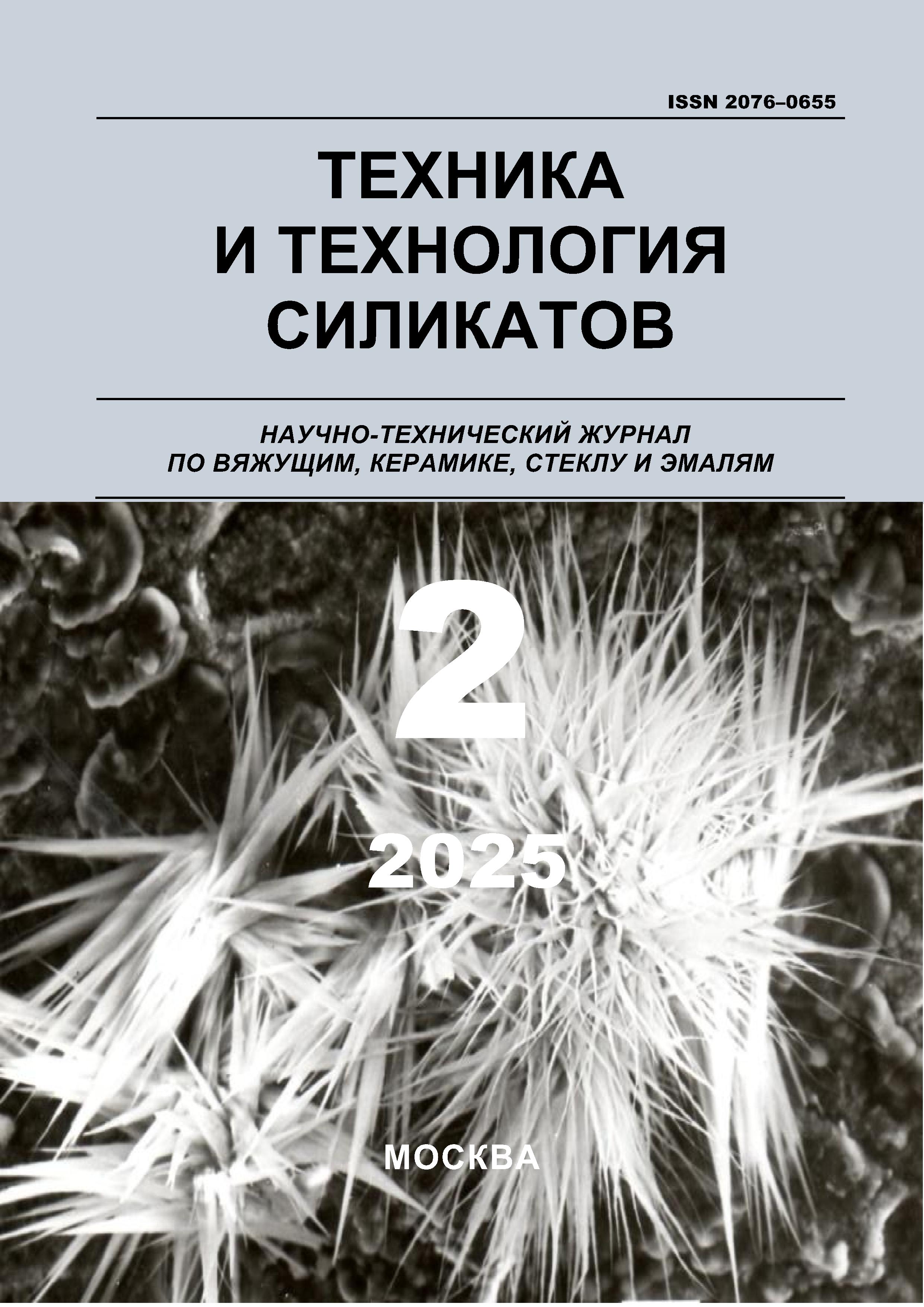graduate student
Moscow, Moscow, Russian Federation
employee
Moscow, Moscow, Russian Federation
employee
Ust-Kamenogorsk, Kazakhstan
employee
Ust-Kamenogorsk, Kazakhstan
UDC 666.94-16
CSCSTI 67.09
Russian Classification of Professions by Education 08.06.01
Russian Library and Bibliographic Classification 383
Russian Trade and Bibliographic Classification 60
The article presents the results of research on the production of low-water-demand cements (LWDC) using raw materials from the Republic of Kazakhstan: conditioned and unconditioned clinker from LLP "Bukhtarma Cement Company," fly ash and slag waste from the Ust-Kamenogorsk CHP plant, and granulated blast furnace slags from the Ust-Kamenogorsk and Karaganda metallurgical plants. LWDC was produced by jointly grinding cement clinker, gypsum stone, industrial waste, and a polycarbox-ylate-based superplasticizer to a specific surface area of 450–550 m²/kg in a vibratory mill. The choice of industrial waste of various compositions as fillers for LWDC production is substantiated, demonstrating that their use allows for the utilization of large-tonnage industrial waste while obtaining binders with strength comparable to that of industrial cement. Physical and me-chanical indicators of LWDC were found to depend on the filler amount, fineness of binder grinding, and superplasticizer con-sumption. Fine grinding of components in the presence of a dry superplasticizer made it possible to produce LWDC 70 and LWDC 50 with compressive strengths of 50–70 MPa.The research demonstrated the possibility of using unconditioned clinker, which is formed at the cement plant as a result of technological process violations and is either stockpiled or partially added to the cement grinding mill, thereby deteriorating its quality, for LWDC production. The optimal ratio of conditioned and uncondi-tioned clinker was established. It was shown that up to 35% of unconditioned clinker can be used in LWDC composition, produc-ing low-water-demand cements with compressive strengths of 45–55 MPa.
low-water-demand cements, industrial waste, fly ash and slag waste, granulated blast furnace slag, dispersion degree, specific surface area, unconditioned clinker, compressive strength
1. Stahel, W.R. (1982) The product-life factor. The Wood-lands, Texas.
2. Pearce, D., Markandya, A. & Barbier, E. (1990) Sustainable development economics and environment in the Third World. London: Elgar, Earthscan Publications Ltd.
3. Graedel, T.E. (2011). Recycling, Material Efficiency, and the Circular Economy. Journal of Industrial Ecology, 15(3), 317–319.
4. Lifset, R., et al. (2013). The Circular Economy and Indus-trial Ecology. Journal of Industrial Ecology, 17(3), 324–327.
5. Shaygazinova A.E. Upravlenie utilizaciey othodov dobychi i pererabotki mineral'nogo syr'ya kak vazhnogo prirodozaschitnogo meropriyatiya // Seyfullinskie chteniya – 9: novyy vektor razvitiya vysshego obrazovaniya i nauki: materialy Respublikanskoy nauchno- teoreticheskoy kon-ferencii, posvyaschennoy dnyu Pervogo Prezidenta Respub-liki Kazahstan. – 2013. – T.1, ch.2 – S. 147-149.
6. Trofimov B.Ya., Shuldyakov K.V. O primenenii maloak-tivnogo domennogo granulirovannogo shlaka //Arhitektura, gradostroitel'stvo i dizayn. 2015. №6. S.37-45.
7. Vasil'ev, O.P. Cementy nizkoy vodopotrebnosti: so-stavy i tehnologiya// Izvestiya stroitel'nyh nauk. 2015. №4. S. 12–20.
8. Zaharov, K.I., Sokolov, A.V. Optimizaciya sostava ce-mentov s nizkoy vodopotrebnost'yu// Nauchnye trudy stroitel'nogo instituta. 2022. №8. S. 44–50.
9. Morozov, Yu.V., Lavrov, A.G. Analiz svoystv cementov nizkoy vodopotrebnosti // Materialy stroitel'noy in-dustrii. 2022. №3. S. 48–54.
10. Ivanova, S.A., Romanov, K.P. Vliyanie dobavok zoly na strukturu i prochnost' cementa// Stroitel'naya himiya. 2019. №3. S. 18–24.
11. Brown, P., Smith, R. Hydraulic properties of composite cements with mineral additions//Advanced Cement Research. 2020, Vol. 32. RR. 55–67.
12. Kudryashov, I.G., Martynova, D.A. Vliyanie mineral'-nyh napolniteley na cementy nizkoy vodopotrebnosti// Innovacionnye stroitel'nye tehnologii. 2021. №2. S.15–20.
13. Hozin V.G., Hohryakov O.V., Sarsenbaev B.K., Sarsenbaev N.B., Karymsahov S. D. Ob effektivnosti primeneniya promyshlennyh othodov Respubliki Kazahstan dlya pro-izvodstva cementov nizkoy vodopotrebnosti //Stroitel'nye materialy. 2013. №5. S. 82-84.
14. Hozin V.G., Hohryakov O.V., Sibgatullin I.R. Karbo-natnye cementy nizkoy vodopotrebnosti. – M.: Monogra-fiya. Izdatel'stvo ASV, 2021. – 366 s.
15. Batrakov V.G. Modificirovannye betony. Teoriya i praktika. – 2-e izd., pererab. i dop. – M., 1998. – 768 s.
16. Babaev Sh.T., Bashlykov N.F., Serdyuk V.N. Vysokoef-fektivnye vyazhuschie nizkoy vodopotrebnosti i betony na ih osnove. M.: Stroyizdat, 1991.
17. Hozin V.G., Hohryakov O.V., Bituev A.V., Urhanova L.A. Effektivnost' primeneniya zoly-unosa Gusinoozerskoy GRES v sostave cementov nizkoy vodopotrebnosti // Stro-itel'nye materialy. 2011. №7. S. 76-78.
18. Astreyko A. N. Poluchenie portlandcementa s ispol'-zovaniem sinteticheskogo gipsa iz sernoy kisloty i ne-kondicionnogo klinkera / A. N. Astreyko, E. A. But-Gusaim // 73-ya nauchno-tehnicheskaya konferenciya uchaschihsya, studentov i magistrantov: tezisy dokladov. - Minsk: BGTU, 2022. – S. 212.
19. Butt Yu. M., Timashev V. V. Portlandcementnyy klin-ker. M.: Stroyizdat, 1967.
20. Gusev, B. V. Tehnologiya portlandcementa i ego razno-vidnostey: Uchebnoe posobie / B. V. Gusev, Yu. R. Krivobo-rodov, S. V. Samchenko. – Moskva: Moskovskiy gosudar-stvennyy stroitel'nyy universitet, Ay Pi Er Media, 2016. – 113 s. – ISBN 978-5-7264-1230-6. – EDN XMAYRX.
21. Smirnov, A.B., Filippov, N.P. Issledovanie svoystv cementov s ispol'zovaniem nekondicionnogo klinkera. Vestnik stroitel'nyh tehnologiy, 2022, №2, s. 56–62.









